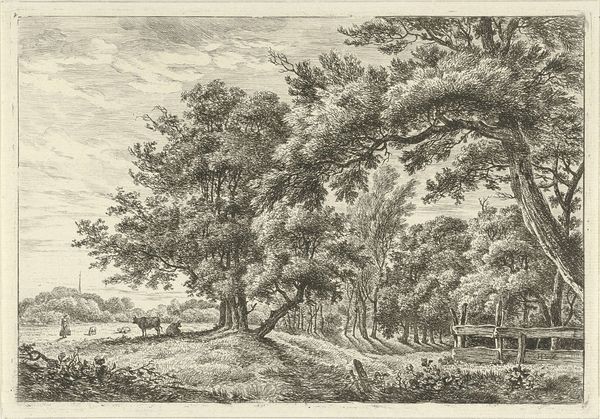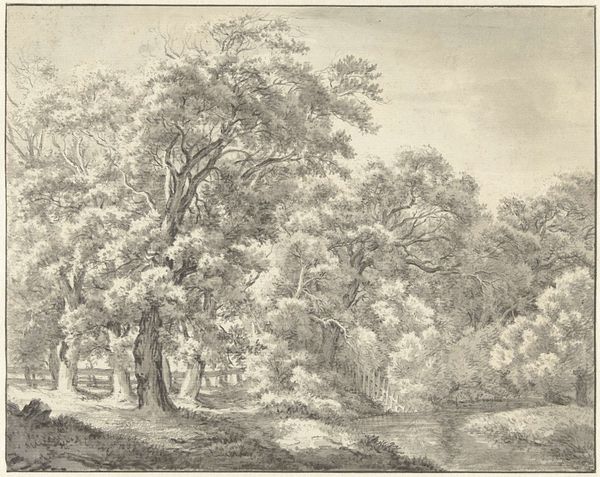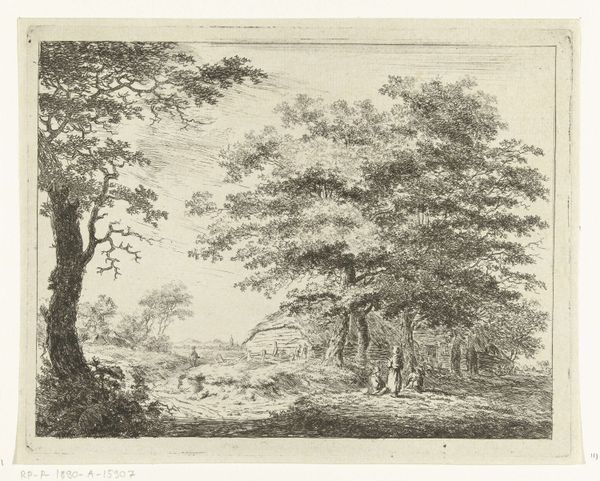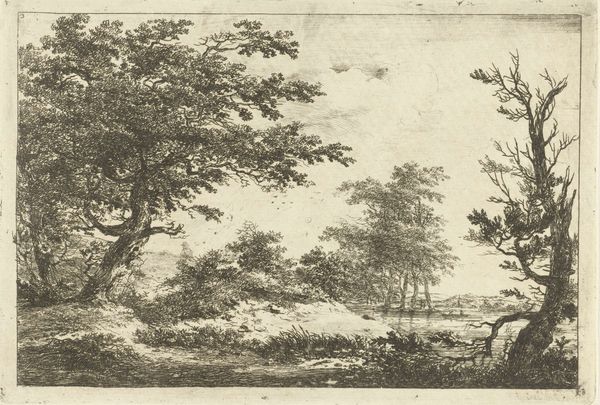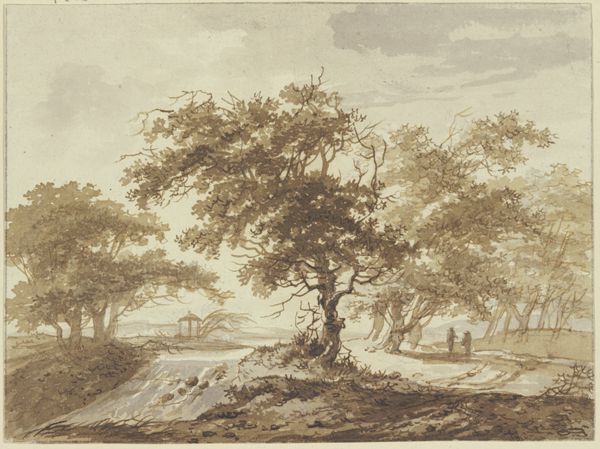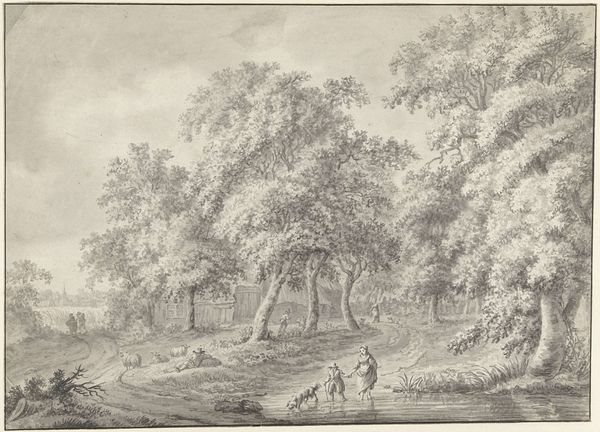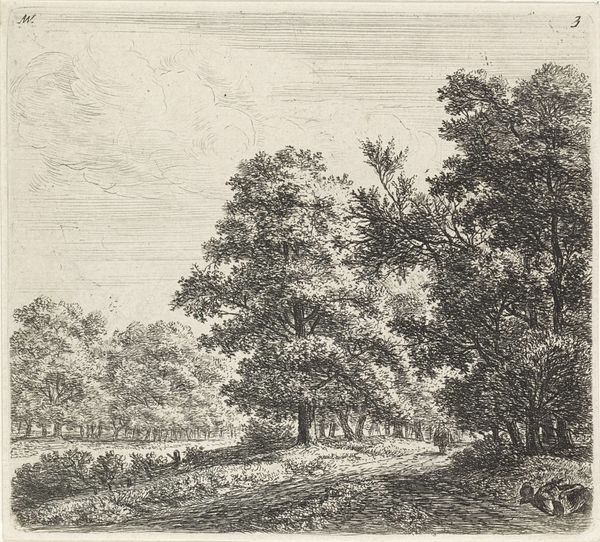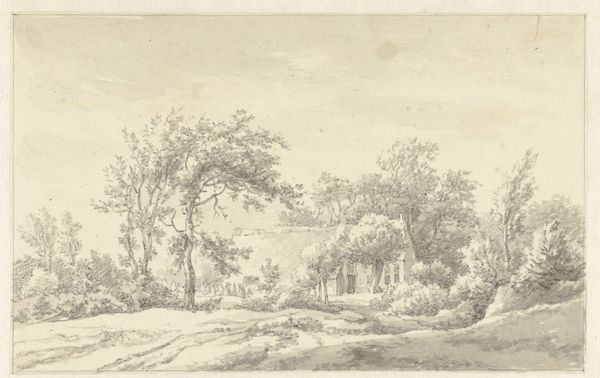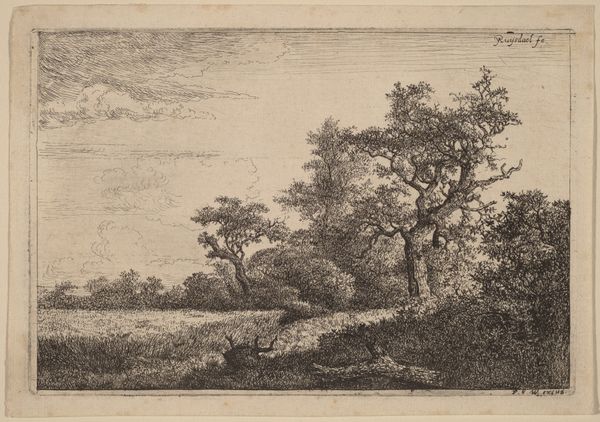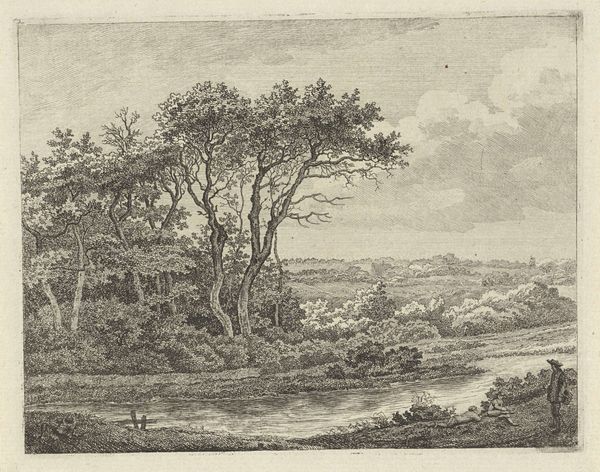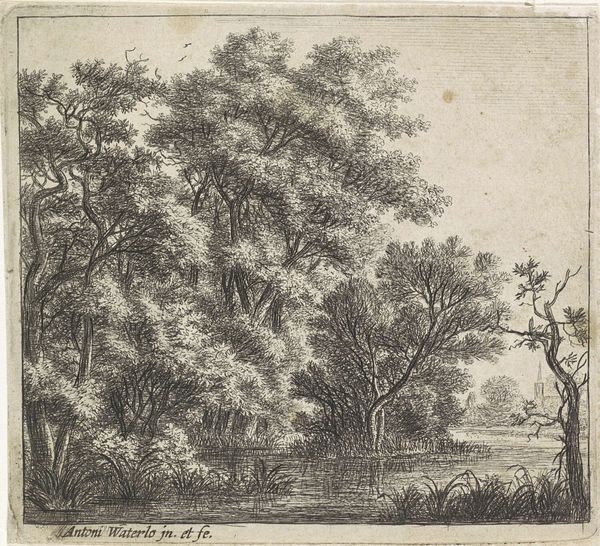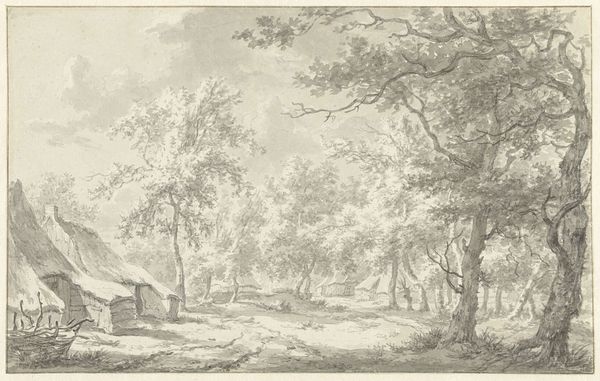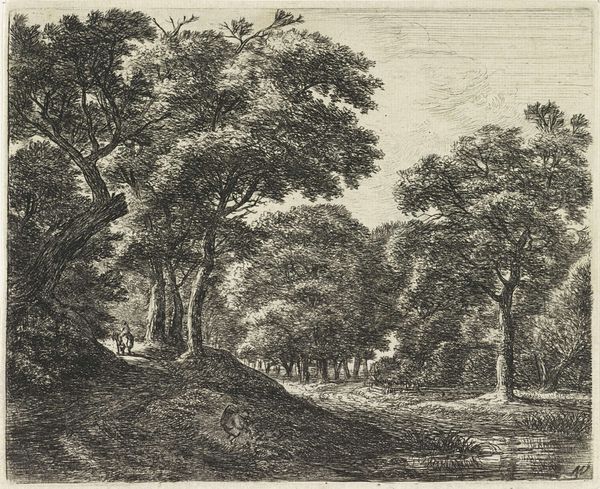
print, etching
# print
#
etching
#
landscape
#
road
#
realism
Dimensions: height 125 mm, width 161 mm
Copyright: Rijks Museum: Open Domain
Curator: Welcome. Today we are looking at "Landscape with Trees and a Man on his Way," an etching dating roughly from 1783 to 1853 by Adrianus Serné. Editor: It feels quiet, almost mournful, even though there is this lone figure on a path. The grayscale lends it an old, faded feeling, doesn’t it? The overall tonality has this subtle textural variety as well. Curator: Indeed. Consider the deliberate composition—the imposing trees frame the path, leading the eye deeper into the landscape. The realism he sought is evident in the meticulous details. Serné uses very fine lines, often close together, to create a range of grey tones. Editor: What strikes me, though, is how that solitary figure becomes symbolic. Is he merely walking, or is he on a journey, perhaps escaping societal constraints? The landscape isn’t simply background, but almost mirroring human struggles—the path forward isn’t so clear. It invites pondering themes of individuality versus the overpowering natural world. Who would be following that path? I wonder, would someone of lower socioeconomic class use a road such as this one? Curator: You raise interesting questions, focusing on societal interpretations and personal narratives, however, I feel one must start with an examination of the etching technique itself to arrive at meaning. Serné masterfully utilizes cross-hatching and stippling to capture subtle changes in light. The composition itself seems calculated. He deliberately plays with positive and negative spaces—that contrast shapes visual harmony. The road itself almost mimics a diagonal compositional strategy, one that seems very purposefully staged. Editor: True, but it is important to consider how people who are often silenced within such landscape artwork of that time can be represented. By calling our attention to this man, Serné forces a response, inviting speculation about lived experiences beyond art technique, perhaps even commenting on broader themes of belonging. Or isolation. Curator: A very thought-provoking consideration, seeing those layers beyond formal composition. Editor: Ultimately, both our lenses let us find renewed ways of understanding Serné’s captivating and, dare I say, rather radical vision. Curator: Yes. Through each consideration we can expand the work's possibilities as a constructed artwork and social representation. Thank you for accompanying us on this exploration.
Comments
No comments
Be the first to comment and join the conversation on the ultimate creative platform.
